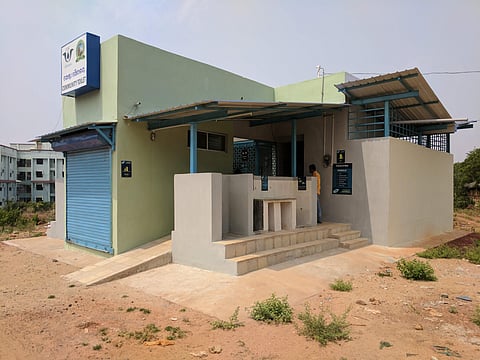

When we say 'public toilet', do you automatically cringe just thinking of the unclean surroundings or the putrid smell? To change this perception of public toilets, a group of organisations have come together to make a difference and they've started with Bhubaneswar and Cuttack first. Special bathing cubicles for men and women, designated spaces for washing clothes in both the men's and the women's section of the toilets, special WC for children, hand and foot wash facilities and more — all these modern amenities to ensure that solutions to the urban sanitation problem are provided and there is a certain dignity in using these toilets. And thus, Project Sammaan was conceptualised.
In 2012, the Bill & Melinda Gates Foundation along with the Bhubaneswar Municipal Corporation and Cuttack Municipal Corporation initiated Project Samman. Their plan was to build more than 100 toilets including public and community toilets for slums. To undertake such a large responsibility, the trio brought on board Quicksand Design Studio, a design strategy and innovation firm based out of New Delhi. They, in turn, brought in Anagram Architects for their architectural services and Project Sammaan was all set to begin.
Roadblocks ahead!
Such a massive project is bound to have certain setbacks and obstacles. We got in touch with the Quicksand team to learn about these setbacks and we were connected with Ayush Chauhan, Partner and Co-founder and Babitha George, Partner, Quicksand. They informed us that the research undertaken for the project itself took one and a half years to conclude. Aptly named the Potty Project, five cities including Delhi, Pune, Ahmedabad, Mumbai and Bengaluru fell under the radar of this research, informs Babitha. So after understanding the mindset and behaviour of people when it comes to sanitation, "we were approached by the Bill & Melinda Gates Foundation to implement what we learnt," explains Babitha. Their learning was primarily around four points — design and architecture of the toilets, operation and maintenance, business models that can be scaled up to other cities and the perception around toilets. While the project kicked off in earnest in 2012, tendering became a problem.
Ayush tells us that there were a lot of issues that came up with the design. "For example, we suggested that we move away from the prefab roof and raise the roof above the wall for natural ventilation. We even suggested a decentralised sewage system," explains Ayush. For the latter, they organised field visits to Nagpur for engineers involved so that they can study the DEWATS (Decentralised Wastewater System which treats or disposes water from smaller communities). "All these were not a part of the guidelines so we faced resistance from the engineering and the public health departments and there was a lot of back and forth regarding its viability," he explains.
Finding a suitable contractor to construct the toilets within the cost and timeframe was also a challenge. "In some sense, this is the reality of urban sanitation today. Before 2012, the year when sanitation became a national agenda, thanks to Swachh Bharat, it always received the short end of the straw," says an exasperated Ayush. But that was then and this is now. Construction of toilets started in 2016 and now, they are off to a good start. "It's overwhelming now to visit these toilets and see people using them," says Ayushwhile Babitha adds, "It's easy to get frustrated, but we must always remember the underlying reason of taking up this project." The first toilet was inaugurated in Ghasia Sahi, Cuttack, last year and has successfully provided its services to more than 400 people till date.
Where's the dignity?
There is no doubt about the fact that people are flocking to cities from rural areas. And Madhav Raman, the co-founder of Anagram Architects, opines that this is out of desperation. "Are our cities equipped enough to allow every citizen to defecate with some dignity? Can we assure every citizen the basic human right of privacy and let them defecate without them encountering some health hazard? Even if we travel to Mars and come back, this problem will persist," believes Raman. And it is not just funds complicating sanitation problems, it is also the design. Having surveyed around 50 toilets for the project, Raman tells us that, "I cannot imagine a worse form of hell." And then there was the prejudice of using one, of course. Thank God for Project Sammaan, we think. Raman tells us that once the toilet is set up, it will be managed by the community and that scares us a little, knowing the penchant Indians have for cleanliness. He assures us that the caretaker's role will not just be collecting the fees, but also making sure toilets are cleaned every hour. Project Sammaan also has an app which can be used by the caretakers to notify municipal authorities when the toilets run out of cleaning material.
Even as an architect, Raman had to deal with sneers and comments like, 'You are an architect and you are constructing toilets.' "As a young architect, one idealises that they will change the world. But sometimes, when the opportunity comes, we miss out on them," says Raman, who is more than glad to have taken up this particular project. We hope that more architects, designers and everybody really, realises that it is here that the opportunity lies to change the world — by solving the problems of the community.
On their mind
For more on the project, click on projectsammaan.com
